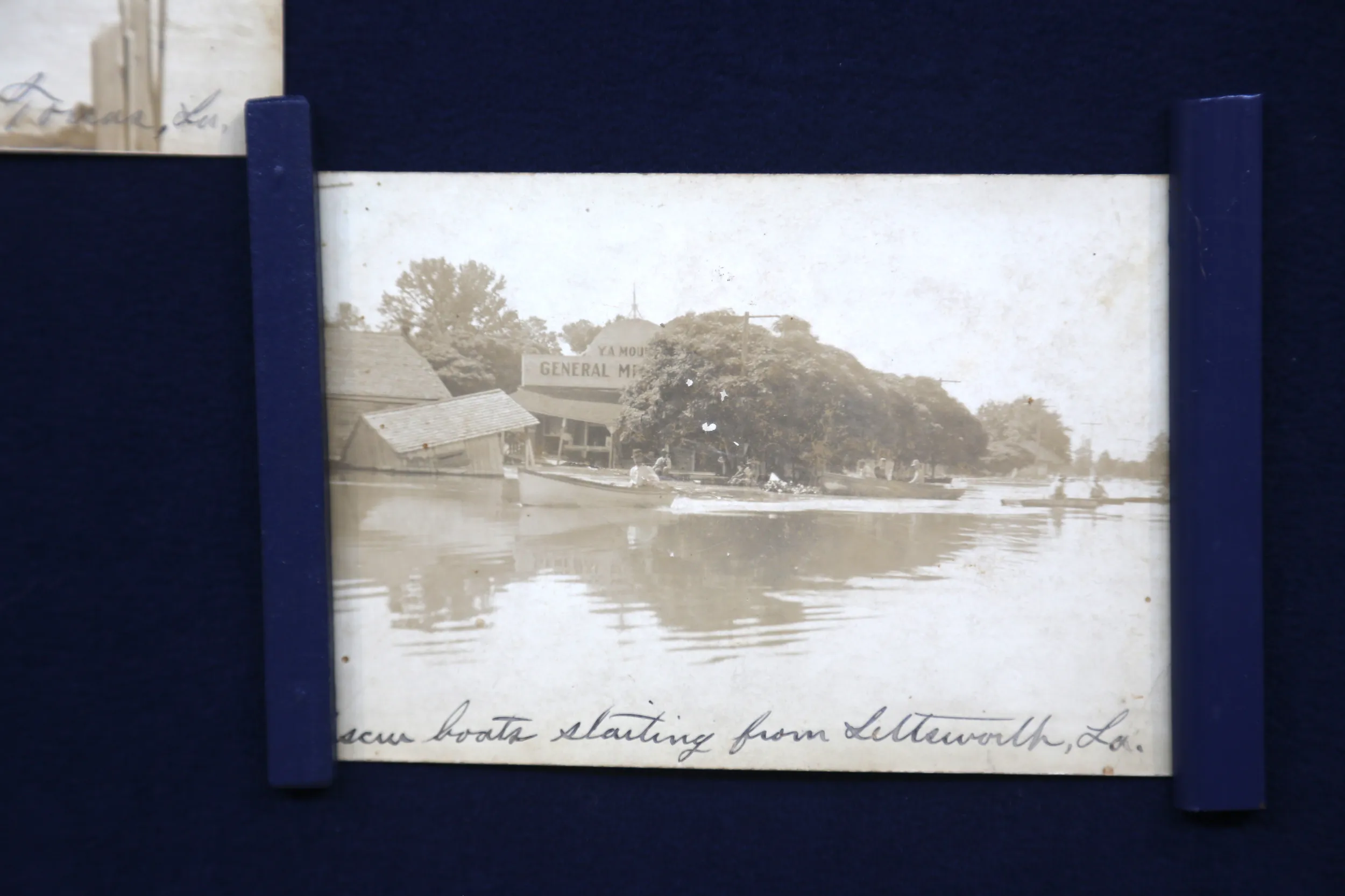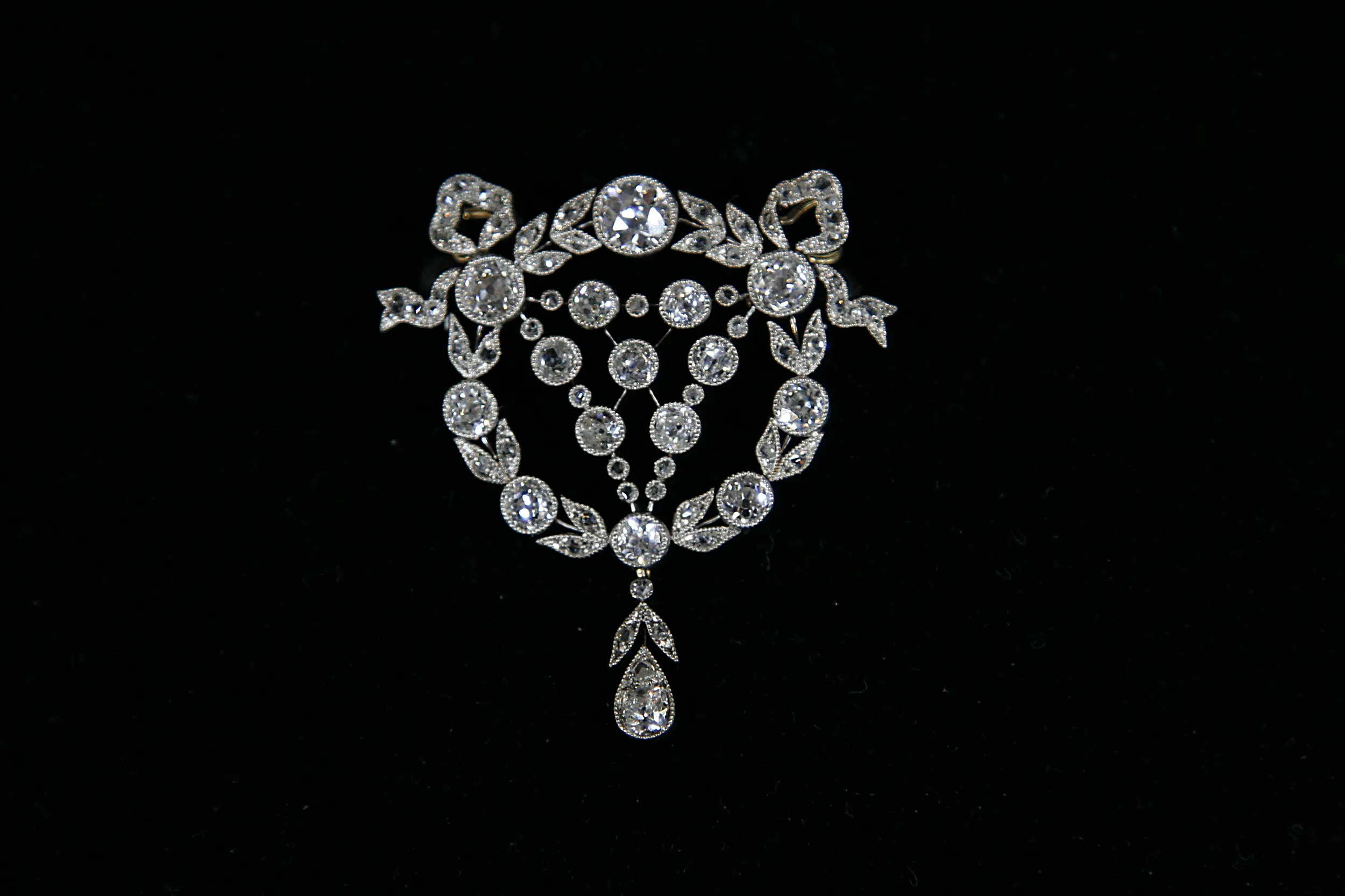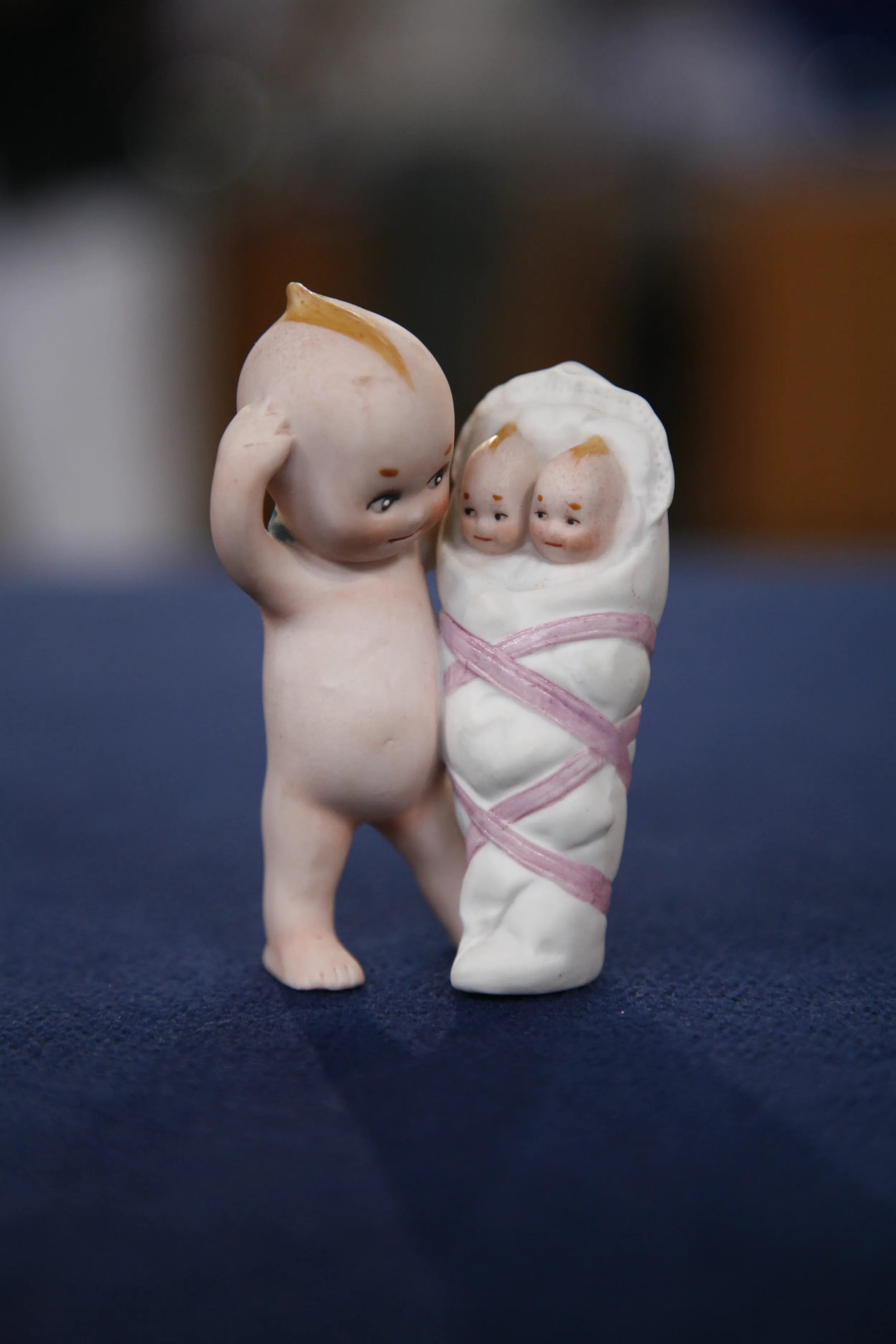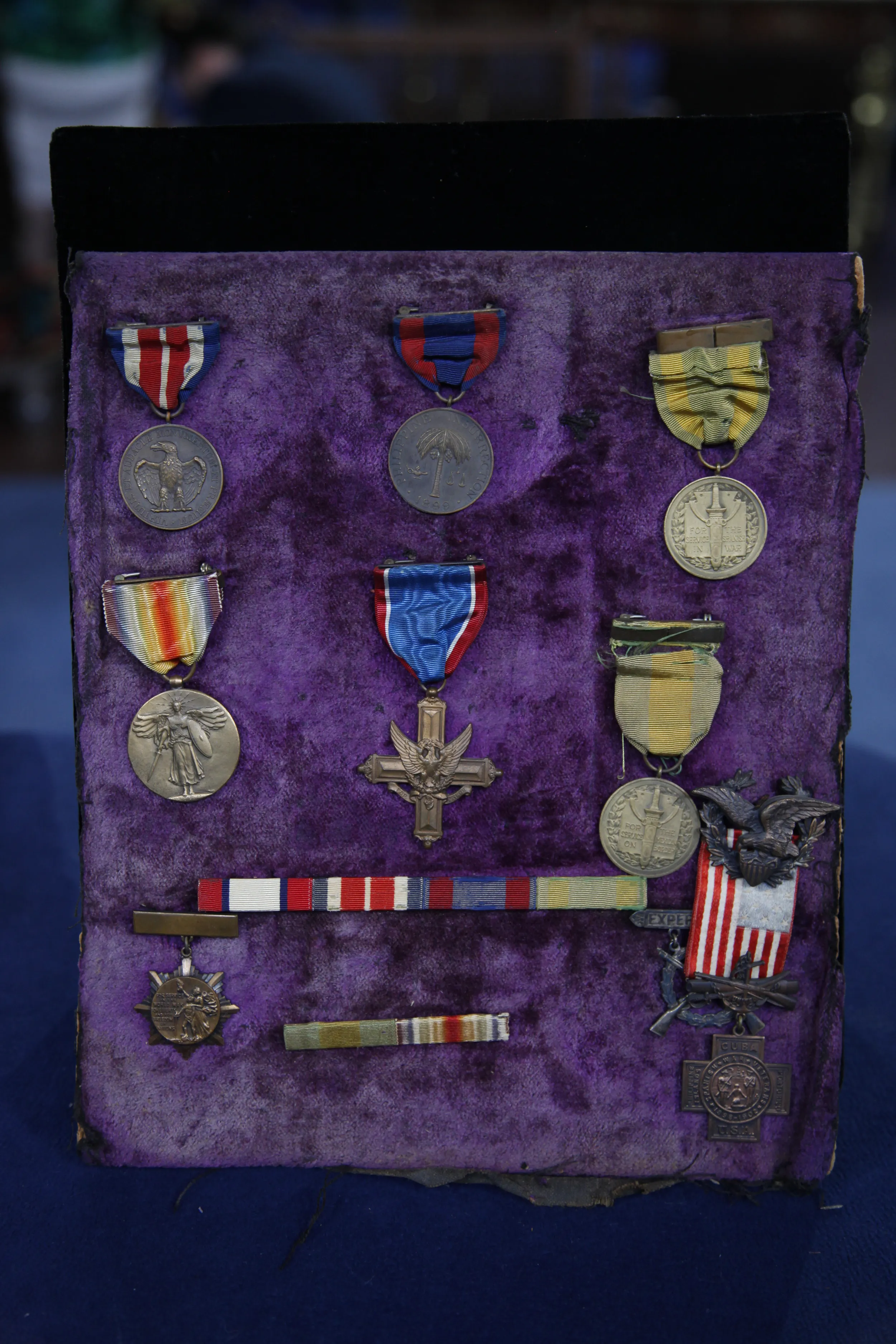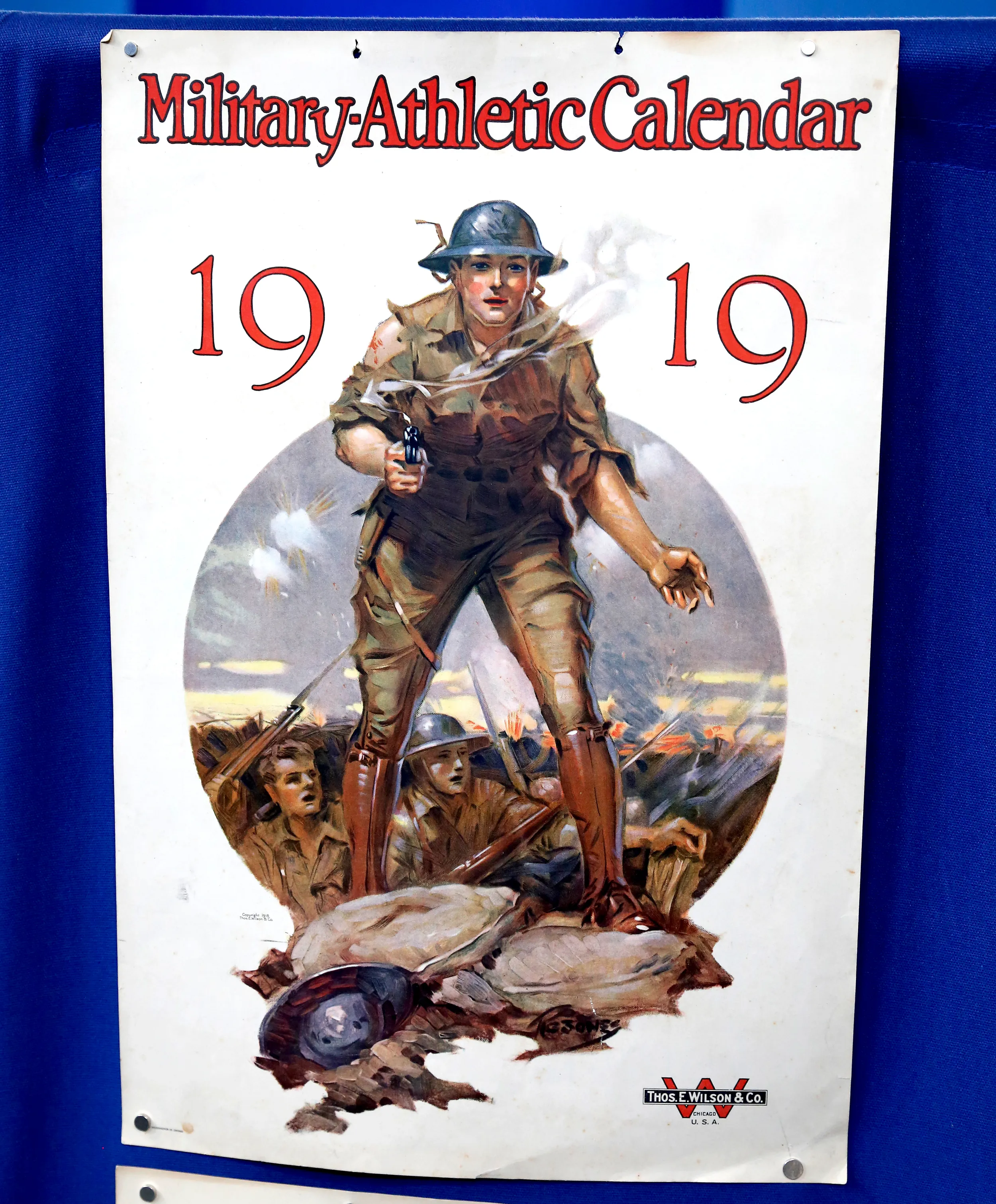GUEST: These are postcards of the Mississippi River flood of 1912. And I don't know much about the actual flood other than family stories that have been passed down. Mainly know about that postcard because there's a picture of my great-grandfather's mercantile store.
APPRAISER: Okay.
GUEST: And I was told by family members that he kept the store open 24 hours a day during the flood so that the workers would have a place to sleep and eat. We were told that he used the countertops for bunkbeds and that he took flooring up and made more bunkbeds in the back, so the people would have places to sleep while they were working.
APPRAISER: So your great-grandfather was a big part of the rescue-
GUEST: Yes.
APPRAISER: -efforts and the assistance following the flood.
GUEST: Yes.
APPRAISER: What stories have come down in the family about the actual flood?
GUEST: I was told that when it broke, it didn't just immediately flood everything, because it was such a flat area of land, and that it took a long time for the waters to completely cover everything. So most of the people had time to gather their belongings and their family members and livestock and send them other places.
APPRAISER: So, this is the flood, of course, part of the great Mississippi flood. Right. Right, this is in Torras, Louisiana.
GUEST: Yes, yes.
APPRAISER: And that was May 1, 1912, was when the levee broke in the front of town. So, these are real photo postcards. These are a divided back, and we can see on the back where these were intended to be for correspondence and to be mailed.
GUEST: Yes.
APPRAISER: It appears these were all unused. These were real photo postcards, and that term relates to the fact that these were an actual photographic image printed on the postcard stock. Do you know who took the images?
GUEST: I have no idea.
APPRAISER: A professional photographer would typically have their name, either the lower left or lower right, as part of the image. But, with the real photo postcards, truthfully most of them we see are what we call amateur photography. But what's great about these is it's highly likely that most of these images have never been seen before. They were most likely printed in small batches and so there's actually only one image here that I saw of it anywhere.
GUEST: Oh. really?
APPRAISER: Printed. So, that's what's fascinating. That's why real photo postcards are so highly collected, and that's why they're so important to historians, too. Because these, taken right after the flood, showing the rescue efforts, showing the assistance, even showing the government steamer that came into town…
GUEST: Right.
APPRAISER: …is really a fabulous chronicle of some historical images that probably, as I've said, have never been seen before. You have a total of 31 here. So, tell me about the captions on the bottom.
GUEST: All I know is that some family member-- and I'm assuming my great-grandmother or my grandmother, wrote those captions on the bottom. Because they were familiar with the area.
APPRAISER: And people often ask if that hurts or helps the value. In this case, because these images are about history, it helps tremendously. Because it gives an account, it gives a caption basically to every image. Typically, when we find the natural disaster postcards like this, I might see one or two, rarely will I see 31 from the same event. So, as far as values go-- I have my favorite here, which is the depot. That one we would expect to sell for $150 to $200 at auction.
GUEST: Oh, wow.
APPRAISER: Moving along to the steamer, that's another one that I would easily expect to sell for $150 to $200 alone at auction.
GUEST: Whoa.
APPRAISER: The value in total for the archive is for between $2,000 to $3,000 at auction.
GUEST: Oh my goodness. Well, thank you. I really didn't think they would have much monetary value other than historically.


